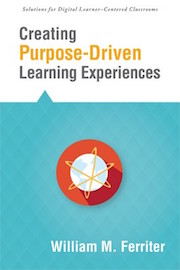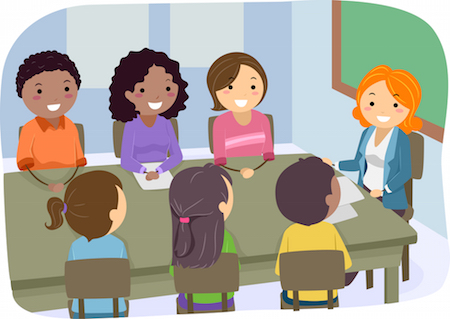The Glories of Year Round Schooling
Each year as the traditional school year draws to a close, the inevitable articles begin to appear: “Planning the last week of school,” “How to encourage summer reading.” But what about those schools that don’t take the summer off? Author (multiple books), blogger (The Tempered Radical) and sixth grade teacher (still hanging in) Bill Ferriter works in a year-round school. Who better to ask about life without summers off?

A little over seven years ago, the school that I work in – along with 32 other elementary and middle schools – was forcibly converted to a multi-track year-round calendar. The district’s goals were simple: Find room for the 3,000-6,000 new students that move into our rapidly growing county in any given year without breaking the budget for new construction.
Multi-track year-round calendars make that possible by assigning students and teachers in a school to four different groups called tracks. At any given time, three of those tracks are in session. Together, they fill the building to capacity. The fourth group is “tracked out” for a three week vacation out of necessity: There’s simply no room for them in the building.
Every three weeks, a different group of students and teachers heads out for a break. That “nine weeks on/three weeks off” rhythm repeats until one school year ends and the next begins.
I know what you’re thinking: What about summer vacation?!
My answer: We don’t get one. And I don’t miss it at all. Why would I? Having four different breaks scattered throughout the school year is DEFINITELY something to look forward to.
Sure, that means I’m in school in July and August while teachers on traditional calendars are lounging by the pool or taking a long, lazy vacation. But it also means that I’m NEVER more than nine weeks from a nice, 21-day break. That’s a tradeoff that I’m more than willing to make.
Three Reasons I Love Year-Round School
From my perspective, there’s a TON of other benefits of year-round schools. Here are three:
► I’ve become more focused and intentional in my instruction. When I was working on a traditional calendar, I never worried about when a unit that I was teaching started or ended. There was no reason to worry given that my school year ran with few interruptions from September until June. If I didn’t get through something, I could extend my lessons by a few days without a second thought.
That’s not the case on a year-round calendar. Three week vacations have a way of interrupting instruction if you aren’t careful about pacing! My units are now intentionally designed to fit neatly within our nine week cycles of instruction. That has made me more focused and efficient than ever before.
► My students are always rested and ready for school. The hardest months for teachers and students on traditional calendars are always January through June. Weeks and weeks go by without a meaningful break.
Sure, there’s the occasional four-day weekend. Yes, there’s a week off somewhere around April. But that STILL leaves entire months of grinding through new content with kids. Add the pressures of weeks’ worth of high stakes testing, and burnout is inevitable. No wonder summer vacation looks so tempting!
That burnout never happens for teachers and students on year-round calendars. Just as tension starts to build and energy starts to wane, we track out. We all return rested and ready to go with none of the academic lag that comes after the traditional eight week summer vacation. 21 days away – from each other, from our classes, from the demands of school – provides just the right amount of time and space for everyone to recharge.
► I can fill new professional roles that aren’t available to teachers on traditional calendars. For years, I’ve argued that schools should create hybrid roles for teachers that make it possible to advance in the profession while remaining a full-time classroom teacher. Original thinking about the roles that teachers fill beyond the classroom is often impossible in systems with traditional calendars, however, because every teacher works on the same calendar.
The result: If I wanted to move into a new role as a full-time mentor, instructional coach, or professional developer, I would have had to leave the classroom completely. Now that I am on vacation while my peers in traditional schools are in session, I can remain in the classroom AND fill these roles. And with four different windows of availability throughout the school year, the support that I can provide can be ongoing and sustained over time.
Year-round schools aren’t perfect
Principals and elective teachers generally work 12 months in year-round schools, receiving vacation time like other professionals working beyond schools. That can be a demanding and unexpected change for folks used to the slower pace of summer breaks.
And finding time for whole-school professional development and teacher collaboration is darn near impossible when different groups of people are rotating in and out of the building every three weeks. Heck, there’s only FIVE days in the entire calendar where our whole staff comes together as one.
But given the choice, I will never work on a traditional calendar again. Not only has the year-round calendar made me more focused and productive as a practitioner, it has left me rested while simultaneously opening new professional doors.
#thatmatters
_____

An advocate for PLCs, student-centered learning spaces, improved teacher working conditions, and teacher leadership, Bill has represented educators on Capitol Hill and presented at state, national, and international conferences. His three latest books (all published in May 2015) are Creating Purpose-Driven Learning Experiences, Teaching the iGeneration, Second Edition and How to Use Digital Tools to Support Teachers in a PLC.







































I went to school at a year-round elementary, for just the over-crowding reasons you mention. Twenty years later, I returned to my elementary (still on a year-round schedule thanks to community and professional support) as an intervention specialist.
I never expected to go home, so I never expected to teach on a year-round schedule. Now that I do, I feel blessed. Not only do I get to regroup every quarter, my students return to me ready to engage. We all need breaks, and year-round school helps both students and teachers refocus and start again each quarter.